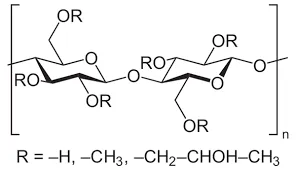
नोव्हेंबर . 21, 2024 08:40 Back to list
cement adhesive additive
The Role of Cement Adhesive Additives in Modern Construction
Cement, often seen as the backbone of construction, has undergone significant advancements over the years. One crucial aspect that has emerged to enhance the performance of cement is the use of adhesive additives. These additives play a vital role in improving the properties of cement-based materials, making them more efficient and durable. This article delves into the significance of cement adhesive additives, their types, benefits, and their impact on modern construction practices.
Understanding Cement Adhesive Additives
Cement adhesive additives are substances that are incorporated into cement mixtures to improve their adhesion properties, workability, and overall performance. These additives can be either organic or inorganic in nature and are designed to enhance the bonding capabilities of cement when it is applied to different substrates. They work by modifying the surface characteristics of the cement, enabling it to adhere more effectively to various materials such as concrete, bricks, tiles, and even natural stones.
Types of Cement Adhesive Additives
1. Polymer-based Additives These are often synthetic compounds that improve the flexibility and adhesion of cement. They create a film on curing, which helps in increasing the bonding strength between the cement and the substrate. Common examples include polyvinyl acetate (PVA) and styrene-butadiene rubber (SBR).
2. Silica Fume This pozzolanic material enhances the strength and durability of concrete when added to the mix. It also improves the adhesion of the cement by filling in the voids present in the concrete structure.
3. Hydrocolloids and Cellulosic Derivatives These additives increase the viscosity of cement paste, improving its workability and reducing segregation and bleeding. They also contribute to better adhesion properties.
4. Chemical Additives Various chemicals, such as surfactants, can be added to enhance the water-repelling properties of cement, making it more durable against moisture ingress and chemical attacks.
Benefits of Using Cement Adhesive Additives
cement adhesive additive

The inclusion of adhesive additives in cement mixtures offers a host of benefits
- Enhanced Bonding Strength The primary advantage is the significant improvement in adhesion properties. This results in stronger joints and connections in constructed elements.
- Improved Workability Cement mixtures become easier to apply and manipulate. This is especially beneficial in intricate construction tasks where precision is required.
- Increased Durability Adhesive additives contribute to the long-term durability of structures. They help prevent issues like cracking, water infiltration, and chemical attack, reducing maintenance costs.
- Versatility The use of these additives allows for greater versatility in construction. They can be tailored to meet specific project requirements, whether for heavy-duty applications or delicate finishes.
- Sustainability Many modern adhesive additives are designed to reduce the carbon footprint of construction activities. By improving the performance of cement, they can lead to reduced material usage and energy consumption during production.
Impact on Modern Construction Practices
In contemporary construction, the use of cement adhesive additives has revolutionized the industry. They have enabled engineers and architects to push the boundaries of design while ensuring structural integrity. Complex designs that require diverse materials can now be achieved seamlessly. Moreover, with the global emphasis on sustainability, these additives help in creating eco-friendly construction practices, aligning with today's green building standards.
Conclusion
Cement adhesive additives are indispensable components of modern construction, fostering innovation and efficiency in the industry. Their ability to enhance bonding, improve workability, and increase durability makes them essential for achieving high-quality, lasting structures. As the construction industry continues to evolve, the role of these additives will be paramount in addressing future challenges, thus heralding a new era of construction excellence. Embracing these technologies is not only beneficial for the individual project but contributes to a more sustainable and resilient built environment.
-
Versatile Hpmc Uses in Different Industries
NewsJun.19,2025
-
Redispersible Powder's Role in Enhancing Durability of Construction Products
NewsJun.19,2025
-
Hydroxyethyl Cellulose Applications Driving Green Industrial Processes
NewsJun.19,2025
-
Exploring Different Redispersible Polymer Powder
NewsJun.19,2025
-
Choosing the Right Mortar Bonding Agent
NewsJun.19,2025
-
Applications and Significance of China Hpmc in Modern Industries
NewsJun.19,2025







